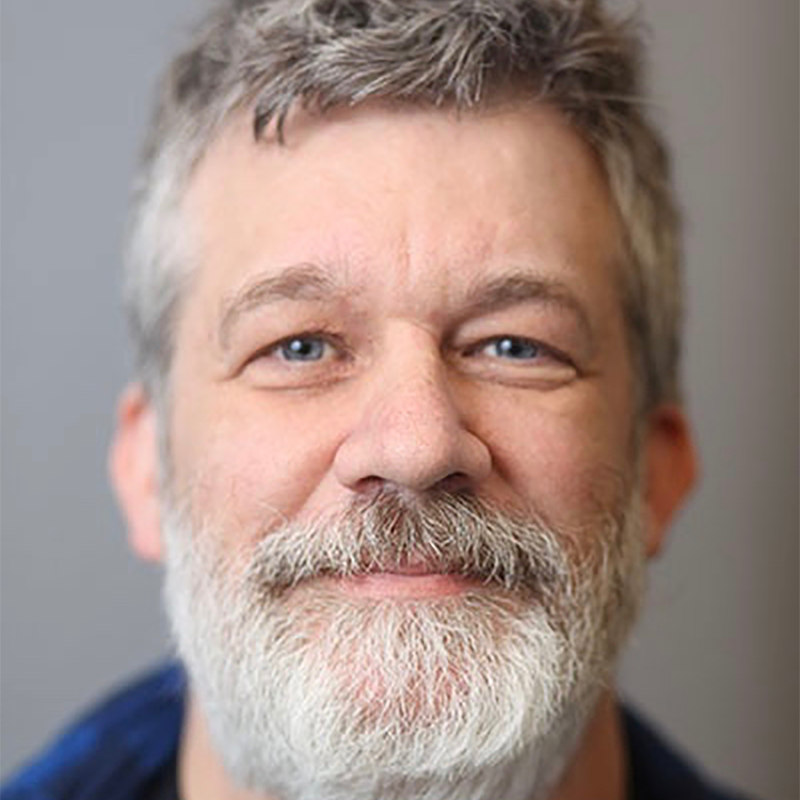Biography
Charlie Catlett is a Senior Computer Scientist, Argonne National Laboratory and a senior computer scientist at the U.S. Department of Energy’s Argonne National Laboratory. He also is a senior fellow at the University of Chicago’s Mansueto Institute for Urban Innovation. His current research focuses on urban data analytics, urban modeling, and the design and use of sensing and “AI-at-the-edge” computing technologies embedded in urban infrastructure and the environment. He was the principal investigator of the NSF-funded “Array of Things” (AoT), an experimental urban infrastructure to measure the city’s environment with sensors and embedded (“edge”), remotely programmable artificial intelligence hardware. He also is a co-principal investigator of the NSF-funded “SAGE: Software-Defined Sensor Network” project, a joint effort including Northwestern University, Argonne National Laboratory, the University of Chicago, and others.
Catlett served as Argonne’s chief information officer from 2007-2010. Before joining UChicago and Argonne in 2000, he was chief technology officer at the National Center for Supercomputing Applications at the University of Illinois at Urbana-Champaign. From NCSA’s founding in 1985, he participated in the development of NSFNET, one of several early national networks that evolved into what we now experience as the Internet. During the exponential growth of the web following the release of NCSA’s Mosaic web browser, his team developed and supported NCSA’s scalable web server infrastructure.
Catlett founded the Urban Center for Computation and Data (UrbanCCD), now part of the Mansueto Institute, at the University of Chicago in 2012. He was recognized as one of Chicago’s “Tech 50” technology leaders by Crain’s Chicago Business in 2014, and nationally as one of “25 Doers, Dreamers & Drivers” of 2016 by Government Technology magazine. He also is the recipient of the Argonne Board of Governors 2019 Distinguished Performance Award. Catlett is a computer engineering graduate of the University of Illinois at Urbana-Champaign.
Presentation: Smart and Trustworthy Cities
We know from experience that using a “smart” phone or wearing a “smart” watch does not make a person smart. For the same reasons, the use of technology in any city is not sufficient to make it smart. For the past decade, ‘smart city’ projects have emphasized measurement, data analytics, and modeling—all of which are critical to new ways to optimize cities and more importantly, new applications to make cities “better” for their inhabitants. Smart city applications will be most likely to make a city “better” if the city’s residents are well-represented in the selection of those applications. In Chicago, what began as an ambitious urban measurement initiative (The Array of Things, or “AoT”) almost immediately evolved to emphasize new types of measurements that typically require human observers. Why? Because scientists, policymakers, and residents alike were asking for data that cannot be easily measured with electronic sensors. For instance, going beyond counting vehicles to understanding their flows, the mix of vehicle types, or factors influencing safety. This requires not only cameras but also sophisticated artificial intelligence to analyze images and video. By supporting such platforms, we can begin to explore how intelligent sensors (and other devices) might improve our understanding of cities across a range of dimensions, from social sciences to traffic safety to environmental sciences. At the same time, introduction of these technologies also requires building and maintaining trust with residents. Catlett will discuss some lessons learned working with residents and organizations in the City of Chicago, and the expanded vision of the team’s current initiative, SAGE, also funded by the National Science Foundation.

